The other day I was carting some leaf mulch from last season’s in-ground garden to my new raised beds and I had to rejoice. The soil from last season’s garden was so healthy! Soil is not the dead material we think it is – it is instead a vibrant ecosystem. In fact, one handful of soil contains between 10 and 50 billion bacteria, hundreds of millions of viruses, 100 million fungal cells, thousands of protists, and hundreds of insects. These organisms all interact with each other, the surrounding flora and fauna, and their inert environment in impossibly complex ways in order to maintain a dynamic homeostasis. Soil health in gardens and agriculture is therefore largely dependent on cultivation practices. Maintaining healthy soil makes plants more resistance to pests and disease, improves plant growth and production, increases nutrient content of the crop (and consequently improves taste!), and promotes plant resilience to pests and disease.

Here are a few signs of healthy garden soil:
- It was dark. Colour can be indicative of some soil properties. Dark brown or black soil is often high in organic matter. Reddish soil can indicate high iron content, white soil denotes carbonate or salt, and blueish-greyish-greenish soil suggests waterlogging, poor drainage, and/or inadequate aeration. Rich, fertile soil should almost look like chocolate cake batter.
- It was alive. As soon as I dug past the leaf mulch, there were hordes of earthworms, centipedes, beetles, and a host of other creepy crawlies. While there is a lot of worry about pests in the garden, expert gardener and entmologyst Linda Gilkeson kindly points out that only around 0.01% of insect species are actually detrimental to the garden. Many of these guys are beneficial, helping to mix and aerate the soil (thereby improving water infiltration and root penetration), predate upon pests, break down organic matter into the soil, and cycle nutrients.
- It contained mycorrhizae. Believe it or not, fungi contain the greatest biomass of all soil organisms. While not all soil microbes are visible, some of them can be spotted if you know what to look for. When I peeled back the layer of leaf mulch and newspaper, I exposed a patch of white filaments that I recognized as mycorrhizal fungi, which develops a symbiotic relationship with most plants (apart from brassicas, curiously enough) and act as an extension of the root network. Mycorrhizae help to solubilize and deliver essential nutrients such as nitrogen and iron from the soil to the plant, and similarly extends access to water. Mycorrhizae can also connect plants to each other by forming networks throughout the soil, which facilitates communication, including distress signals in cases of disease or predation. In exchange, the plant releases exudates into the soil around its roots containing carbohydrates and proteins that “feed” the fungi as well as beneficial bacterial communities.
- It passed the “squeeze test”. The “squeeze test” is an informal albeit useful indicator of soil texture, which determines water infiltration rate and storage capacity, aeration and root growth, soil fertility, and workability. Soil texture is determined by the composition of particles classed by size (from biggest to smallest – gravel, sand, silt, clay). The “ideal soil” for cultivation is loam, which is comprised of a fairly even mix of sand, silt, and clay. To perform the squeeze test, take a handful of moist soil from the garden and squeeze it in your fist. Observe how well it holds its shape. If it falls apart easily and has a gritty feel, it is likely a sandy soil. If it holds its shape well even when poked and is sticky, the soil has high clay content. If it feels almost floury and crumbles, the soil is loam. Loam soils have the easy workability, root penetration, and good drainage of sandy soils and the high nutrient content and water holding capacity of clay soils.
- It smelt like soil. You know that earthy soil smell? Gets stronger when wet? Well that smell is attributed to a substance called geosmin, which is produced by a genus of bacteria called The presence of Streptomyces is excellent news – it has been found to produce metabolites that are antibiotic (which are actually used in allopathic medicine for two-thirds of naturally-derived antibiotics), antifungal, and insecticidal; as well as other volatile organic compounds that stimulate plant growth in a variety of ways.
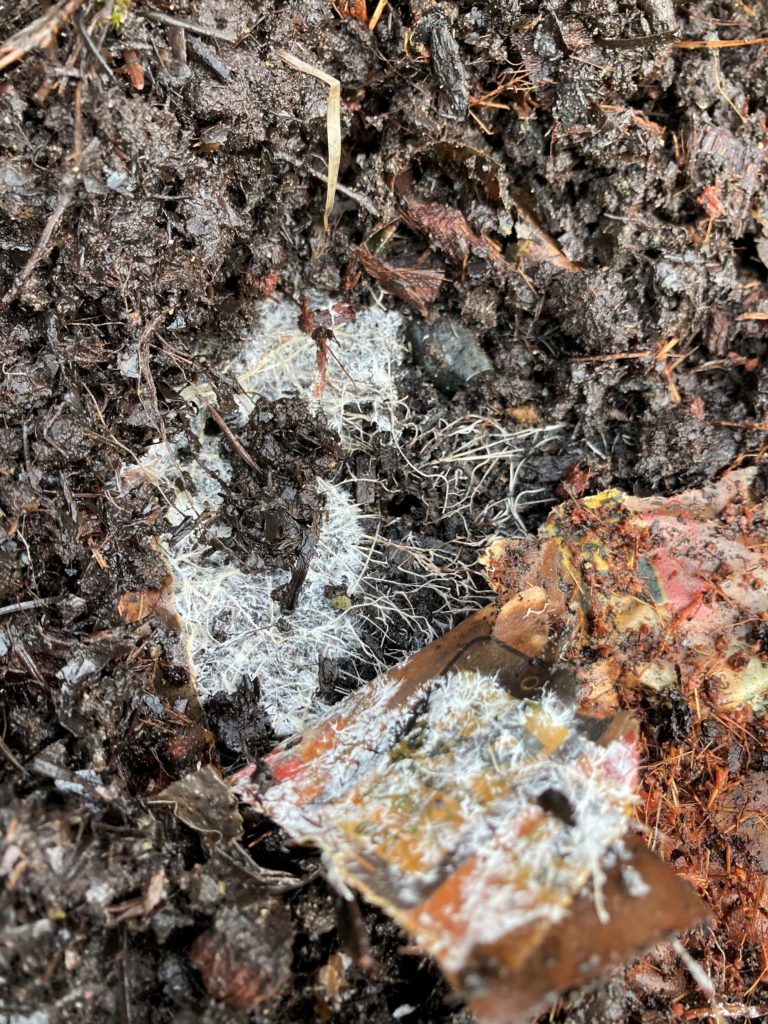
Now that you have an idea of what to look for, take a peek outside and ask yourself how your soil is doing. Do not despair if there is room for improvement! My next post will feature strategies to enhance soil health in your own garden. Sign up for email notifications on the side bar so that you don’t miss it!
In the meantime if you’d like to do some research for yourself, regenerative agriculture can be worth looking up. Featured in documentaries such as Kiss the Ground and Biggest Little Farm (both available on Netflix), regenerative agriculture aims to build soil fertility and sequester carbon, thereby increasing productivity. Its basic tenets can be easily applied to home gardening. It is vital to note that there is currently a lot of hype around regenerative agriculture, and while it certainly has clout (ranked #11 of Project Drawdown’s solutions to climate change, it is projected to reduce total atmospheric CO2 by 23.15 gigatons by 2050 from both sequestration and emission reduction), most of its predominantly white proponents have been neocolonial in their failure to acknowledge traditional indigenous land management practices that have been suppressed before being “rediscovered” (for instance, seaweed cultivation and tree intercropping). They have also failed to address the racism and social inequity inherent to the food system and question the current paradigm that has led to this need for drastic change.
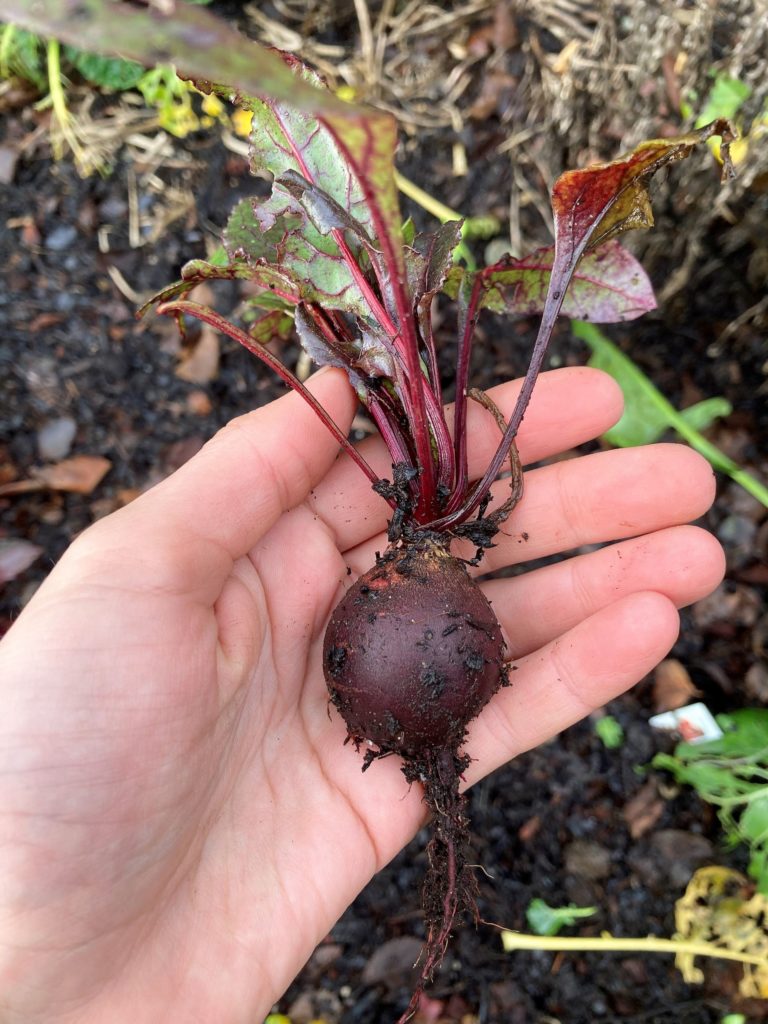
And now for a little garden update. I feel so lucky to be able to continue harvesting from my garden into January. I took out a few broccoli heads because they were mouldy from all the rain we’ve had but I kept the leaves for stir fry (they’re rich in fibre and nutrients like beta-carotene and calcium). I also beheaded my kale, found a few surprise beets, and rediscovered the oca I planted way back in early June. Oca is a perennial tuber that is allegedly similar to a tiny, tangy potato. It originated in the Andes, where it remains a staple crop. Apparently it can be eaten raw or used in the place of a potato, so I may eat a few then replant the others in my raised beds. I also planted three strains of garlic in the new raised bed (hence the leaf mulch transplant that kicked off this whole post). This is relatively late for garlic (I planted my other cloves a few months ago) so I may be in for smaller bulbs, but it still has months to grow. Meanwhile, I still have some fairly sad-looking Brussel sprouts, cauliflower, beets, and two carrots in the ground, and this year’s garden planning is underway!
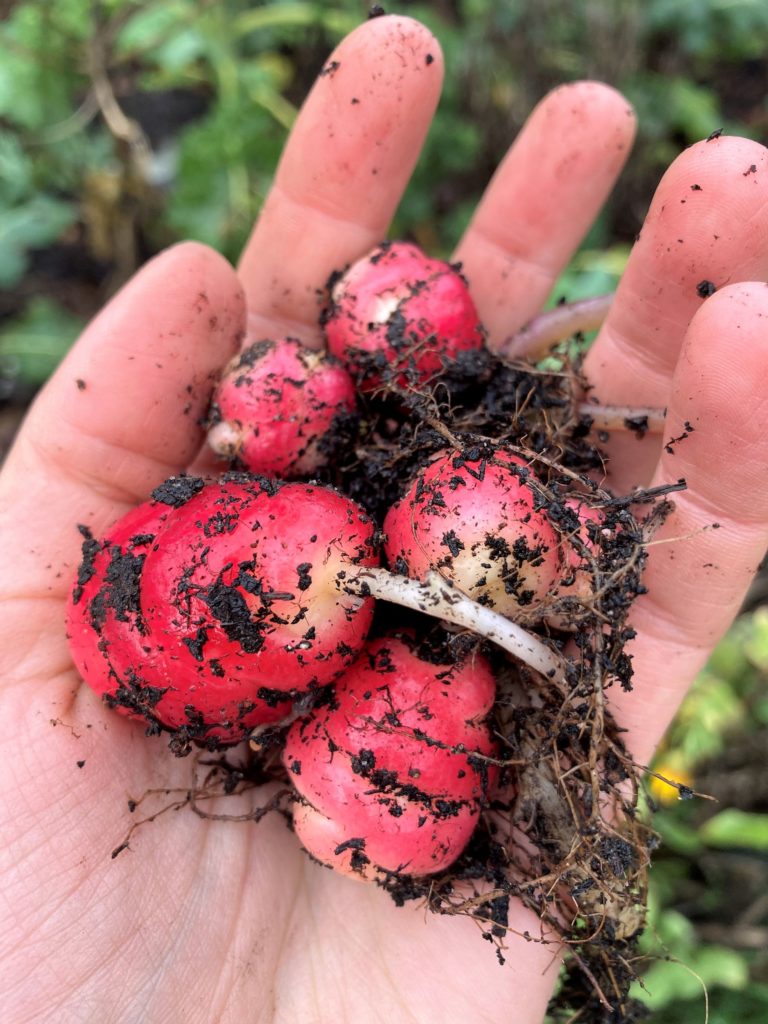
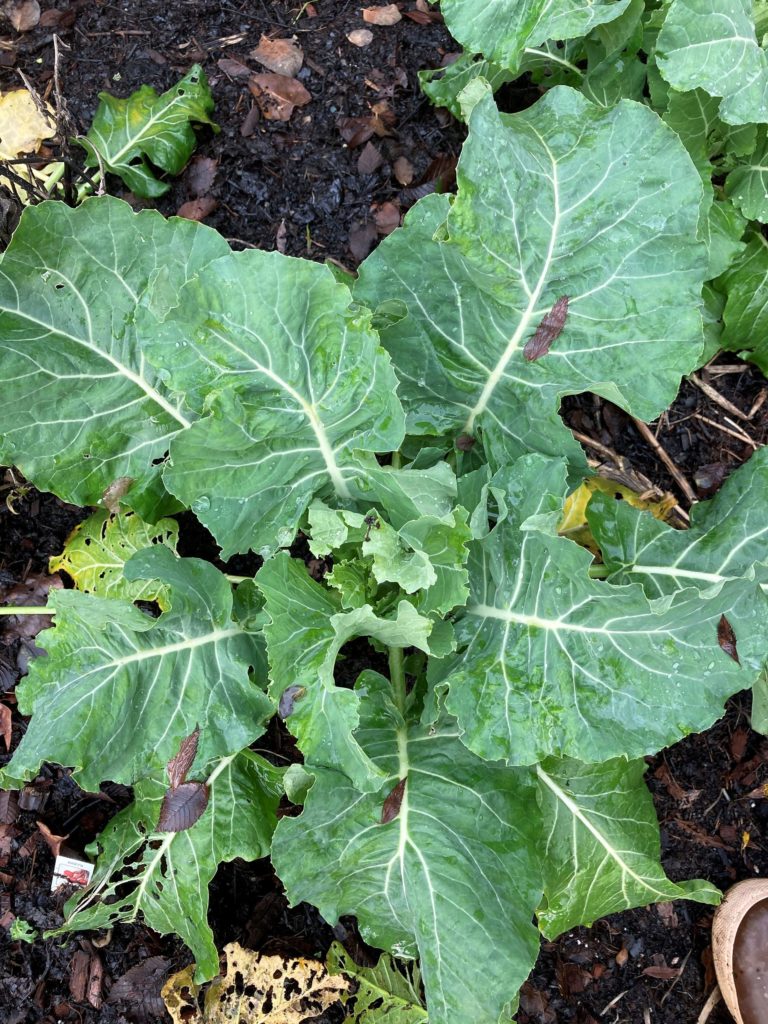
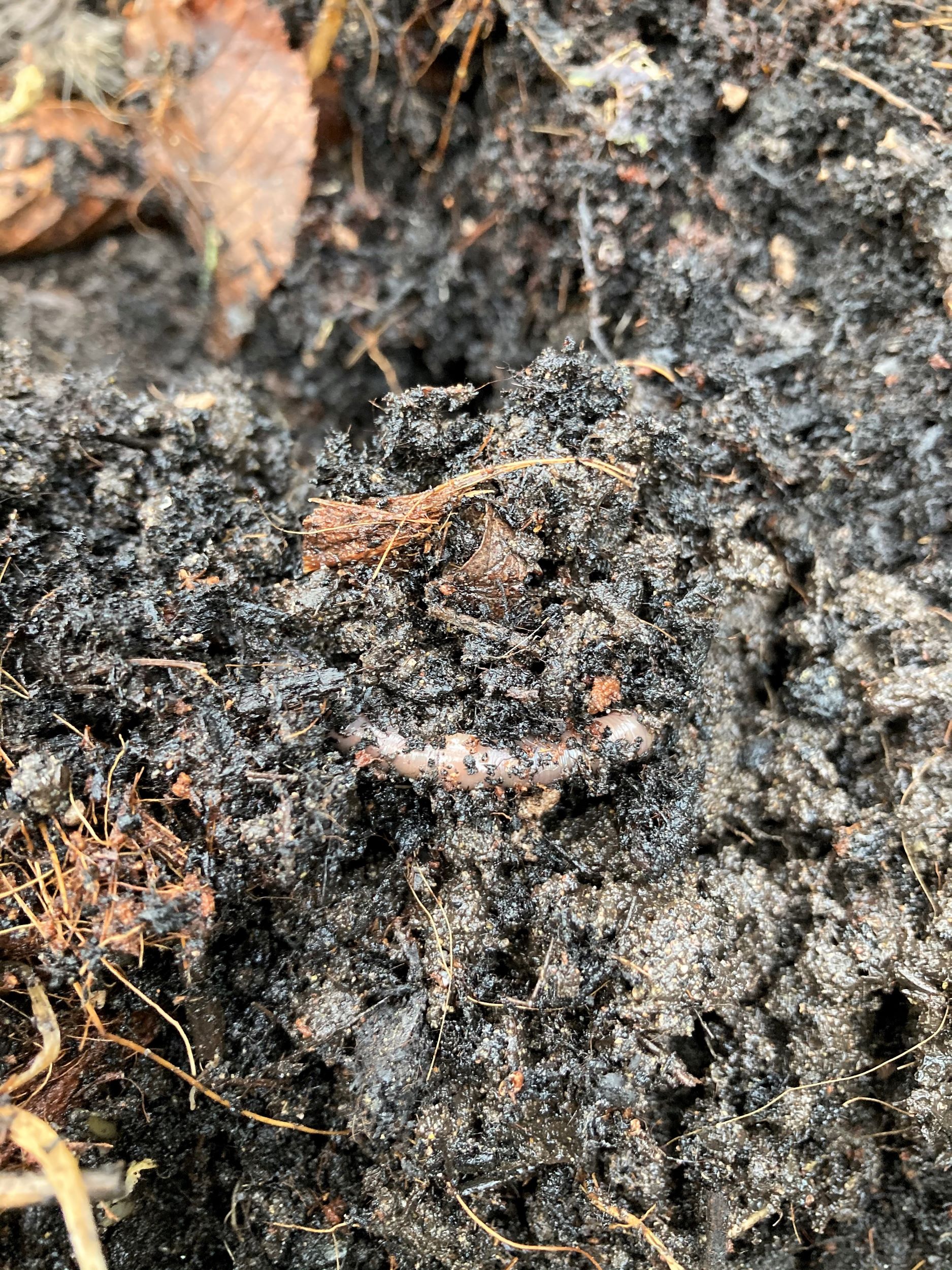
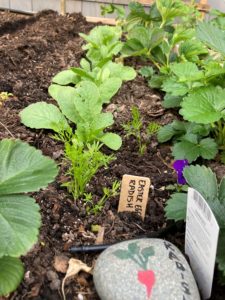
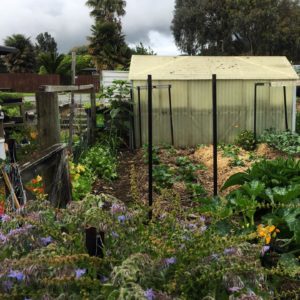
Great post. I will be facing many of these issues as well.. Florencia Rice Tiebold